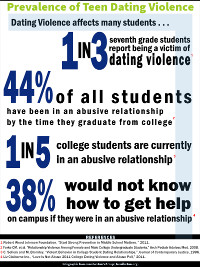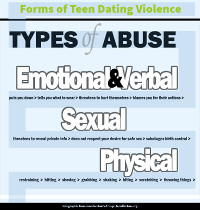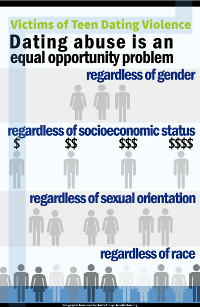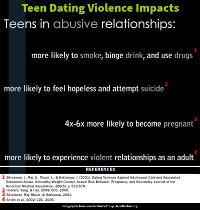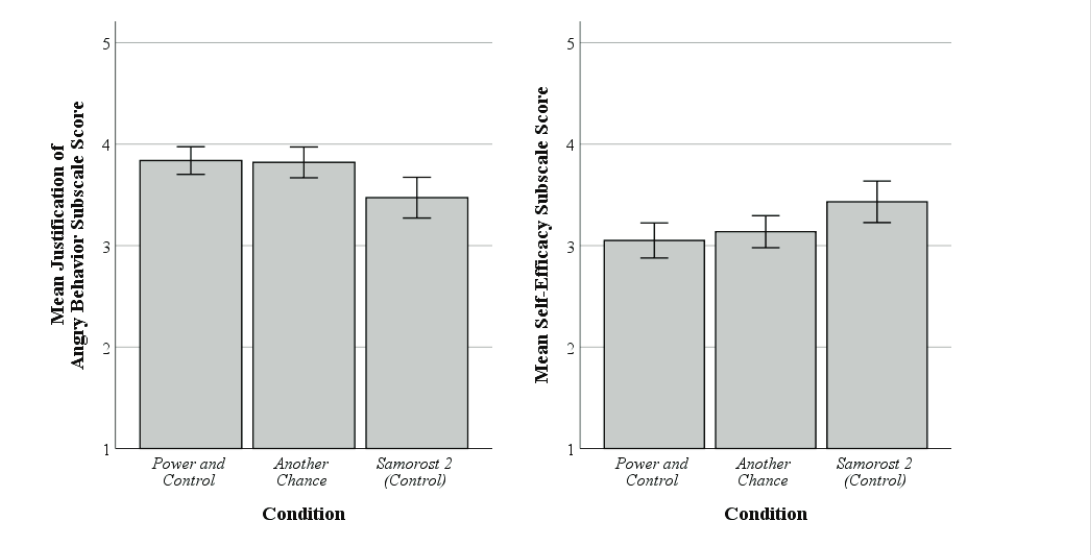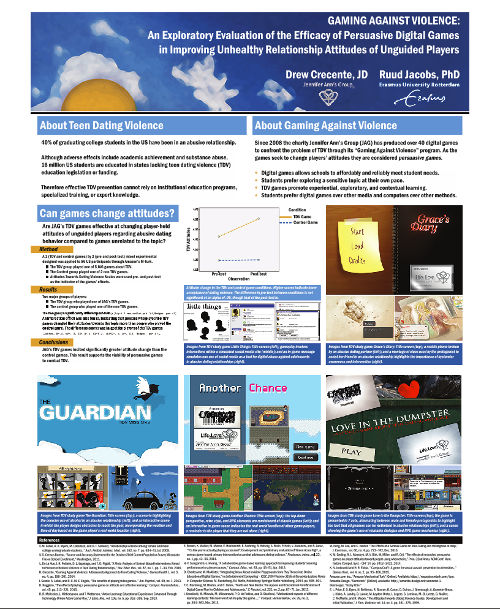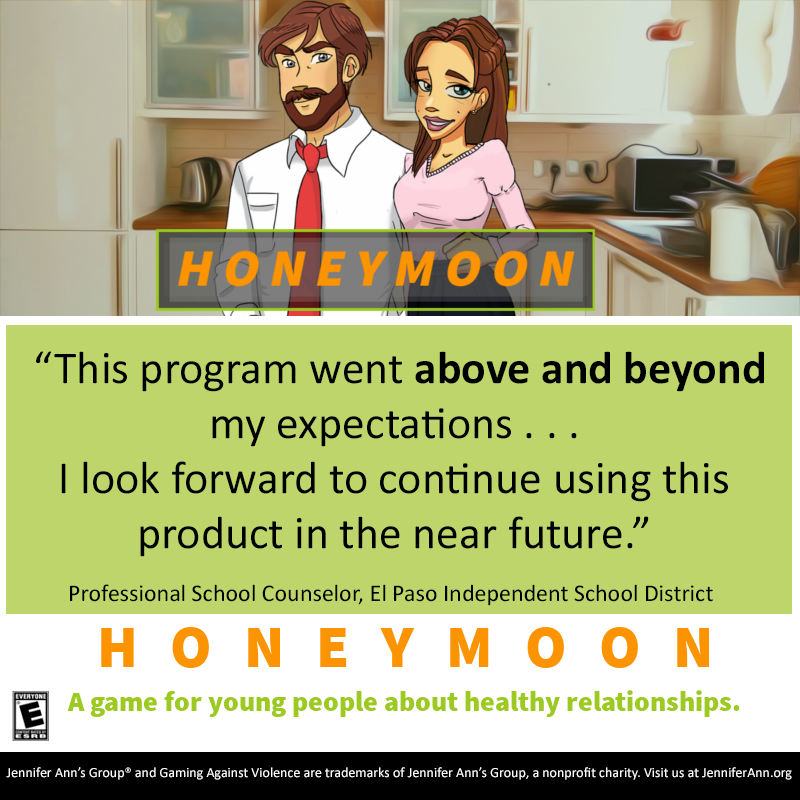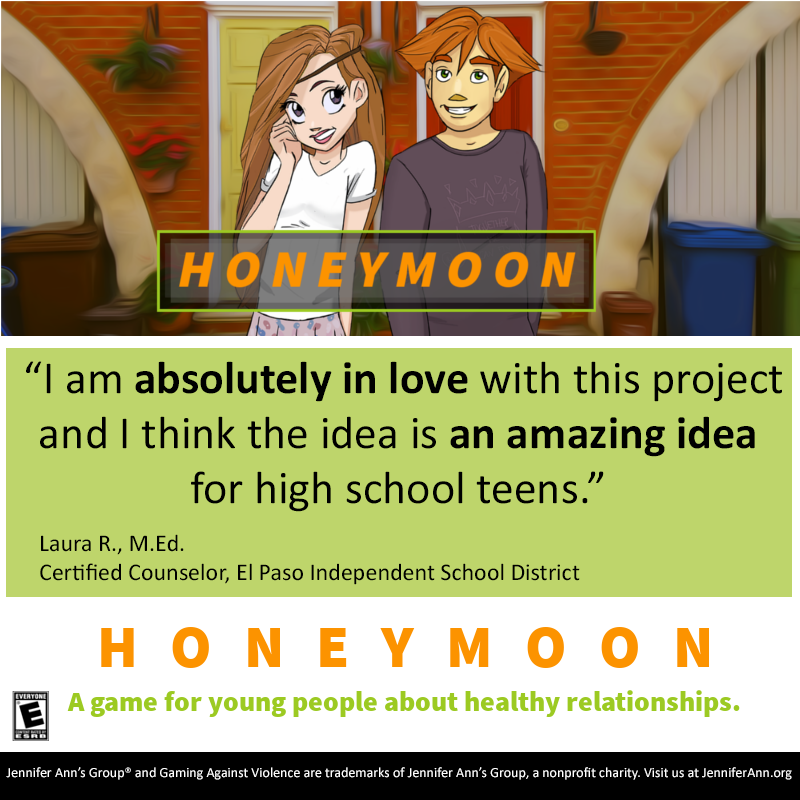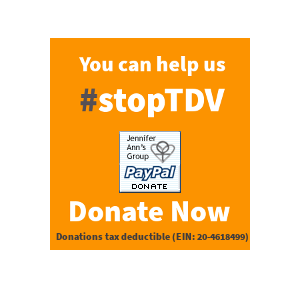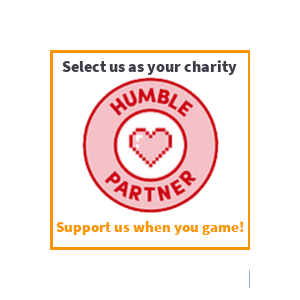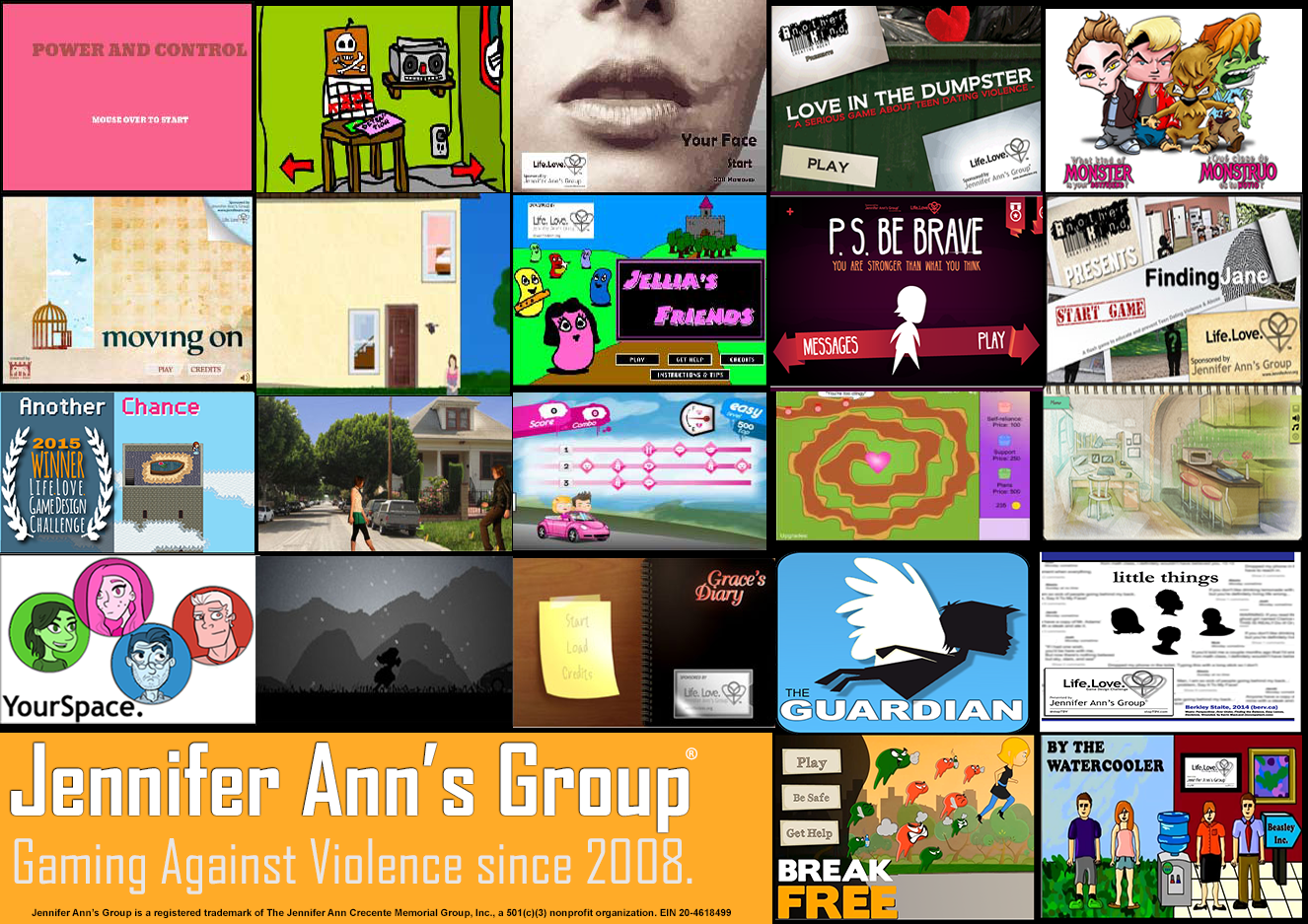
HONEYMOON is one of the serious video games that have come out of the Gaming Against Violence program. Developed by Jennifer Ann's Group, Gaming Against Violence has been producing, publishing, and researching serious video games about serious issues affecting young people since 2008. Over fifty serious games have been produced addressing a variety of topics including consent, gaslighting, and teen dating violence prevention.
The use of bespoke video games to engage, educate, and empower young people about serious issues is an effective strategy. Studies show that these video games are effective at, in addition to other benefits, changing unhealthy attitudes about abusive behavior, increasing knowledge of dating violence, and increasing awareness of teen dating violence.
Published Research
CAVA Study
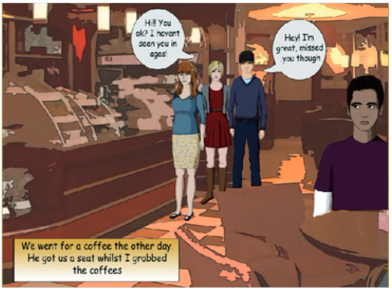
Changing Attitudes Towards Dating Violence in Adolescents (CAVA), an EU funded project, focused on teen dating violence prevention through "an immersive and engaging video game ... designed to appeal to young people." The resulting video game, developed in 2011, was the first of its kind to be developed in Europe.
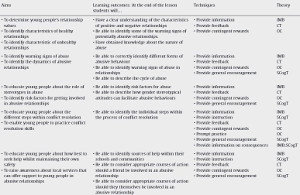
The resulting 2014 study from CAVA shares their success in using their intentionally designed video game to change attitudes about abusive behavior with students in the UK, Sweden, Germany, and Belgium. As CAVA discusses in their paper, the interactive nature of digital games is better suited for addressing nuanced issues like emotional or psychological abuse than is non-interactive, static content. This interactive element also supports experiential learning, discovery learning, and context learning. Also, adolescents prefer using computers over traditional methods while learning and digital over other mediums. Additionally, young people appreciate when these preferences were taken into consideration. Student participants in the CAVA study stated "I think people are more likely to listen more instead of just a teacher telling you stuff" and "[i]t doesn't feel like you're on the computer an hour because it's like a game."

Bowen, E. Walker, K. Mawer, M. Holdworth, E. Sorbring, E. Helsing, B. Bolin, A. Leen, E. Held, P. Awouters, V. Jans S. (2014). “It’s like you’re actually playing as yourself”: Development and Preliminary Evaluation of “Green Acres High,” a Serious Game-Based Primary Intervention to Combat Adolescent Dating Violence. Psychosocial Intervention, 23(2014), 43-55.
Erasmus Study
In comparing two forms of persuasive games from the Gaming Against Violence program intended to prevent teen dating violence, the Erasmus study found that "both persusasive games evaluated showed a clear difference with the control game in the attitudes their respective players held afterwards." Both games showed less acceptance of angry behaviors in dating relationships and also showed lower self-efficacy with respect to dealing with relationship abuse. Although the reason for the reduced self efficacy was beyond the scope of the Erasmus study, one suggested explanation is that through playing these games about teen dating violence the participants had a heightened awareness of the pervasive and serious nature of dating abuse among adolescents.

Jacobs, R.S., Jansz, J., and Kneer, J. (2019). Playing Against Abuse: Effects of Procedural and Narrative Persuasive Games. Journal of Games, Self, & Society, Issue 1. Dunlop, K. & Rivers, S.E. (Eds.) pp. 110-120. doi:10.1184/R1/7857578.v1.
Mechanical Turk Study
An exploratory study utilizing a subset of five serious games from the Gaming Against Violence program was conducted from November 2015 - January 2016 utilizing online participants via Amazon's Mechanical Turk service. The results of this study were promising, showing that those players playing the Gaming Against Violence games with teen dating violence themes showed greater increase on attitudes towards dating violence than did players of the control games unrelated to teen dating violence. The study "was not large enough to distinguish differential efficacy among the teen dating violence prevention games but did lay the groundwork for future studies to further validate the viability of these games as persuasive tools."

Crecente, D., Jacobs, R. S. (2017). Gaming Against Violence: An Exploratory Evaluation through Mechanical Turk of the Efficacy of Persuasive Digital Games in Improving Unhealthy Relationship Attitudes. Games and Learning Alliance 6th International Conference, GALA 2017, Lisbon, Portugal, December 5-7, 2017, Proceedings. Dias, J.; Santos, P.A.; Veltkamp, R.C. (Eds.) pp. 259-262.
Gaming Against Violence White Paper on Teen Dating Violence (TDV)
A white paper created in cooperation with the Violence Prevention task force at IPRCE evaluates the problem of teen dating violence and its impact as well as factors complicating effective prevention. This paper then illustrates how serious video games such as those from the Gaming Against Violence program can be used to effectively overcome these complications in order to prevent teen dating violence.

Crecente, D. (2019). Gaming Against Violence White Paper on Teen Dating Violence (TDV). TDV Video Games: Proposed Use and Call for Further Research
Gaming Against Violence: A Grassroots Approach to Teen Dating Violence
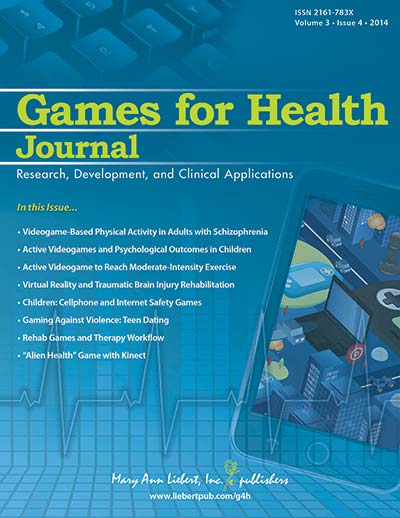
Program Profile:
Teen dating violence is a pervasive problem that affects millions of adolescents worldwide. Although there have been various approaches to addressing this problem, using videogames had not been employed before 2008, when Jennifer Ann's Group, an Atlanta, GA–based nonprofit organization, created an annual competition. The Life.Love. Game Design Challenge rewards game developers for creating videogames about teen dating violence without using any violence in the games themselves. The resulting videogames have increased awareness about teen dating violence and provided educational information to assist adolescents, parents, and teachers in identifying abusive relationships.

Crecente, D., (2014). Gaming Against Violence: A Grassroots Approach to Teen Dating Violence. Games for Health Journal, Vol. 3, No. 4. pp. 198-201.
